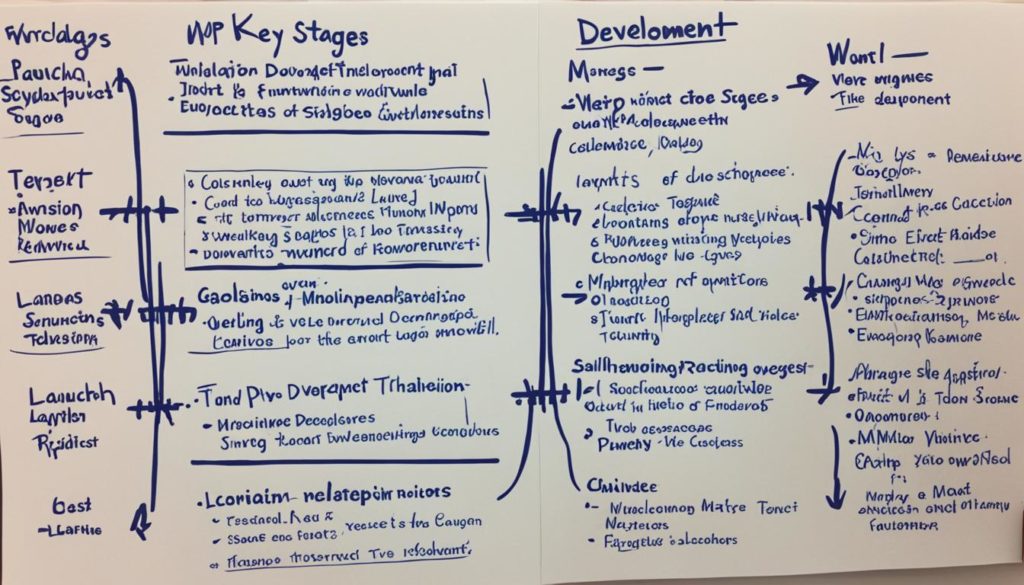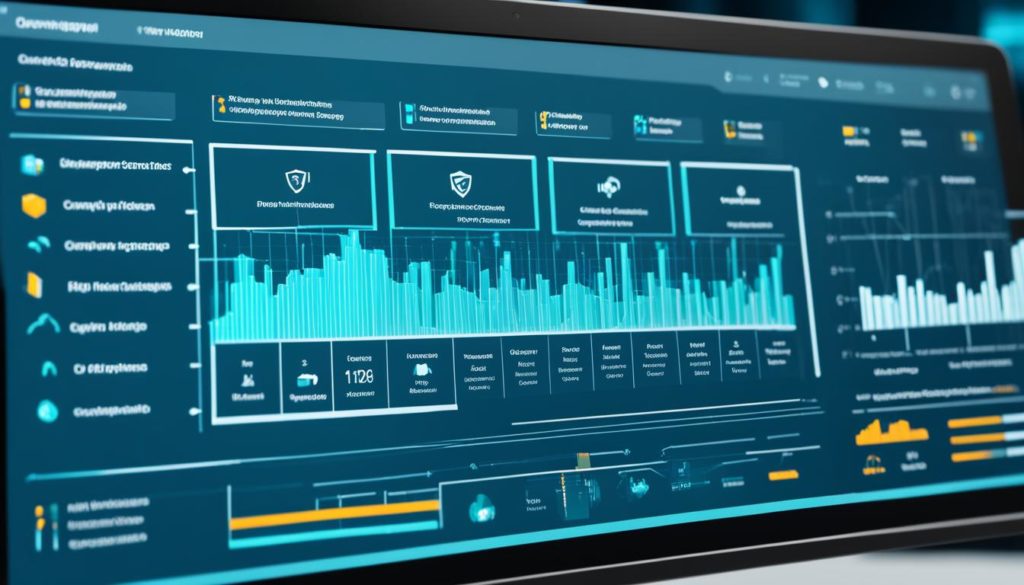
Did you know, a shocking 60% of small firms collapse within six months after a cyberattack? This shows how vital a information technology audit is. It strengthens your company against security threats and assures a secure infrastructure. In the digital world, businesses in Lancaster, York, and Harrisburg face big challenges. They struggle to keep up their IT systems and comply with rules.
Our custom IT assessment services aim to find weak spots, improve your tech stack, and enhance your IT management. With regular technology audits, your data stays safe. You manage information better and your operations become smoother and more reliable.
Let’s explore how our technology audit services can change the game for your business. They help you stay ahead in a very competitive market.
Key Takeaways
- A technology audit can prevent costly data breaches and cyberattacks.
- Regular IT audits help align your operations with compliance standards.
- Audits can identify areas for tech stack optimization.
- Improving IT management through audits can elevate operational efficiency.
- Comprehensive audits will ensure a secure infrastructure.
Introduction to Technology Audit Services
A technology audit is a detailed review. It looks deeply into a company’s IT systems, governance, and processes both on-site and off-site. Its main goal is to check the systems’ integrity, security, and efficiency. These systems need to support the company’s big goals. Audits are crucial for managing tech risks and improving data protection.
What is a Technology Audit?
An IT Audit checks a company’s tech setup through a digital transformation assessment. It examines many things. These include the security of the physical and digital environments, handling changes, and securing data. Professionals with CISA or CISM certifications do the audits. They use a specific framework focusing on areas like access control and cybersecurity. These audits not only check for standards compliance but also suggest ways to improve.
Importance of a Technology Audit for Your Business
Doing technology audits regularly helps align tech strategies with business goals. Through these audits, businesses spot issues and handle risks well. Auditors offer on-site and off-site reviews, revealing key insights into how IT is governed, its security, and how well it can recover from disasters. This helps strengthen control, manage risks, and protect against data breaches. Plus, tech audits boost operational efficiency, ensure compliance, and protect data.
- Ensures compliance with industry standards
- Identifies security vulnerabilities
- Provides recommendations for risk mitigation
- Enhances data protection measures
- Improves overall efficiency and productivity
Learn more about technology audits by exploring their definition and methods. This provides a clear overview of their critical aspects and benefits.
| ITGC Audit Controls | Description |
|---|---|
| Physical and Environmental Security | Protecting assets against damage or unauthorized access |
| Logical Security | Controlling access to computer systems and data |
| Change Management | Managing IT systems changes to avoid disruptions |
| Backup and Recovery | Ensuring data backups and effective recovery plans |
| Incident Management | Handling and resolving IT incidents efficiently |
| Information Security | Maintaining data confidentiality, integrity, and availability |
For more on the value of technology audits, look into audit methodologies. Explore how AI and data analytics are changing audits. Leaders in the industry agree that using technology improves audit accuracy and aids business success.
Understanding the Technology Audit Process
The technology audit process checks if IT systems are strong, follow rules, and are well managed. It’s key for organizations to look after their tech and keep data correct. With enterprises spending big on cloud services, IT audits are vital. Let’s look at the main steps in a successful technology audit.
Steps Involved in a Technology Audit
Our audit starts with careful planning. We decide what we want to achieve, like protecting assets or ensuring data is right. This forms the basis of our audit plan. It details our approach and what we will examine.
Auditors then review IT controls and *software analysis* deeply. They check documents and security to find solid evidence. This includes checking that all policies are current and work well.
Identifying Business Goals and Needs
It’s important to match the audit with the business’s unique goals. Goals can be following laws, improving workflows, cutting costs, or finding weak spots. For instance, focusing on telecom controls can make things more efficient. Working with IT experts gives useful insights at this stage. It’s good to list all IT assets, controls, and do surveys beforehand.
Read more about IT audit processes
Evaluating Technology Tools and Infrastructure
This step involves looking closely at the existing tech tools and infrastructure. Auditors categorize technologies to assess their importance and how well they perform. Full IT audits check processing facilities, hardware, systems, and apps. Using frameworks like COBIT ISACA spots threats. The aim is to keep systems working safely and correctly.
- Planning
- Risk Assessment
- IT Controls Evaluation
- Compliance Review
- Vulnerability Assessment
Reporting and Implementation of Recommendations
The last step is key as it means putting together a report. This report shows how IT controls are doing, points out issues, and suggests improvements. Following these tips helps keep IT safe and documents in order. Regular audits also help use resources better, save money, and improve data protection.
Following these steps makes sure a technology audit helps an organization’s IT be more effective and secure. For deeper understanding, you might want to look at the IT audit guide.
Key Components of a Comprehensive Technology Audit
A deep dive into technology audits reveals they include many important parts. They make sure your IT setup is strong and safe. Such checks align tech tools with your business goals. They also protect against threats and inefficiencies.
Network Infrastructure Analysis
Our review starts by looking at your network’s setup. We check network designs, devices, and settings against standards like NIST or ISO. Managing your network well boosts business efficiency. Roughly 93% of small business owners depend on tech for their operations.
This phase spots any area that’s lagging or needs a tech update.
Cybersecurity Review
Keeping your business safe from cyber dangers is crucial. We examine both physical and digital security measures. We check how well vulnerabilities are managed and if policies are followed. With many Americans lagging in cybersecurity smarts, regular IT reviews are vital.
They keep systems safe and boost staff awareness. For tips on doing an IT audit, check out this article.
Software Evaluation
We then assess the software you’re using. We look at licenses, how much it’s used, and how well it integrates. This checks for compliance and ensures software runs smoothly. Evaluating software helps companies be more efficient and productive.
Over 30% of business leaders say tech is key to their success.
Data Security Audit
Data security is essential in any tech review. We thoroughly check how data is protected, the encryption used, and if privacy laws are followed. This is key for businesses serious about the COBIT framework and cybersecurity standards.
Regular checks prevent data leaks, crucial as SMBs spend over 16% of their budget on IT.
For a deep dive on why detailed audits matter, visit this guide. Doing thorough tech audits not only protects your assets but also sharpens your IT operations. This gives you an edge in the digital world.
Benefits of Regular Technology Audits
Regular technology audits are key to keeping IT environments safe and secure. Cybercrime costs are rising, expected to hit $10.5 trillion yearly by 2025. So, organizations must keep a close eye on their cybersecurity. By doing audits often, we catch and fix possible threats early. This stops small issues from turning into big data breaches. Regular cybersecurity audits also give us helpful info. This info helps us make our cybersecurity better and stay ahead of new threats.
Enhanced Security and Data Protection
One top benefit of tech audits is better security and data protection. A 2021 KPMG study shows 86% of people worry about their data privacy. By checking our systems often, we find and fix weak spots. This proactive step boosts customer trust by showing we protect their info. Also, tech audits guide us in disaster recovery planning. They make sure our emergency plans are ready and effective.
Improved Efficiency and Productivity
But audits do more than just improve security. They also make us more efficient and productive. Audits can lead to simpler tech setups by removing tools we don’t need. This makes our work smoother and helps our team do their best. Regular audits offer valuable insights, too. These insights help us make smart business choices, pushing us towards our goals.
Compliance with Industry Standards
In today’s world, meeting industry standards is a must. Tech audits check that we follow important rules, like PCI DSS and HIPAA. This lowers the chance of getting fined. Sticking to these standards also keeps our reputation strong and builds client trust. Regular audits align our IT work with our overall strategy, aiding good IT governance.
In conclusion, regular tech audits are vital. They protect us, increase our efficiency, and ensure we comply with standards. By doing these audits, we’re not just protecting our organization. We’re also setting it up for future success. For info on how audits can benefit your IT department, think about starting a consistent audit strategy.
FAQ
What is a Technology Audit?
A Technology Audit deeply examines a company’s tech systems, management, and processes. Its goal is to protect company assets, secure data, and boost business strategies.
Why is a Technology Audit Important for My Business?
It’s key for strengthening your info systems and checking IT rules. It aligns business goals with tech efforts, manages risks well, and protects against data leaks.
What Are the Steps Involved in a Technology Audit?
First, plan by setting key goals. Next, draft an audit checklist. Then, review documents and security steps.
Lastly, evaluate and write a report with action steps for fixes.
How Do We Identify Business Goals and Needs?
You start by pinpointing your main aims like protecting assets or data accuracy. This shapes the audit to meet your unique needs and business targets.
What Does Evaluating Technology Tools and Infrastructure Entail?
This step looks at if your network meets set standards (like NIST or ISO), checks cybersecurity methods, controls, and software for correct use and setup.
What Happens After the Audit is Complete?
A report is made showing the condition of IT safeguards and weaknesses found. It advises on how to improve security and systems.
What is Included in a Network Infrastructure Analysis?
It checks your network’s hardware and software against known standards, like NIST or ISO. This ensures strong and safe operations.
Why is a Cybersecurity Review Important?
It tests your security standing, finds weak spots, and suggests ways to strengthen your defense against online threats. This keeps your data and systems safe.
What Does a Software Evaluation Involve?
The process examines software for proper licensing, best use, and how well it works with other tech in your setup.
Q: What are the Focus Areas of a Data Security Audit?
It aims at securing data with strong policies and following rules to stop unauthorized access and data leaks.
Q: What Benefits Can We Expect From Regular Technology Audits?
Expect better security, data safety, smoother operations, higher efficiency, following industry norms, and being ready for emergencies.
Q: How Do Technology Audits Ensure Compliance with Industry Standards?
They streamline tech use, upgrade cyber safety guidelines, and help with emergency plans to meet tough compliance standards for data and finance.
Future App Studios is an award-winning software development & outsourcing company. Our team of experts is ready to craft the solution your company needs.










